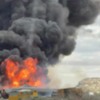Is anyone seriously advocating that, or are you just making stuff up to score political points?
Must be political points, because environmental steps being taken haven't generally involved making engines lighter, particularly with freight railroads, other than using certain lighter weight materials to offset weight gains. There's no conventional wisdom to it at all. Suggest people get educated before making statements that are overly-simplistic or just plain wrong. Facts would be good. See Association of American Railroads sites and Union Pacific sites, for example. The latest environmentally friendly Tier 4 engines, designed to reduce criteria pollutant emissions by 70 percent over standard locomotives, weigh 432,000 pounds! See BNSF sites for info on these. Determining optimal weight of engines, and number of engines used on a given train, involves complex calculations involving tractive force, optimal load efficiency and fuel efficiency of tons hauled per amount of fuel used (and resulting environmental effects), etc. etc.
And are heavy locomotives always a good thing? Nope. This is a problem being dealt with with respect to the use of battery powered engines. Battery powered engines may have problems to overcome involving TOO MUCH weight, according to Trains Magazine. They note that locomotives are already incredibly heavy, and adding batteries to these can significantly increase their weight, making it more difficult for them to climb steep grades and navigate difficult terrain. Additionally, as Trains notes, the weight of the batteries can reduce the amount of cargo the train can carry, which could make them less cost-effective than traditional diesel locomotives. Yes, weight has its downsides, too!






